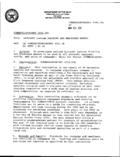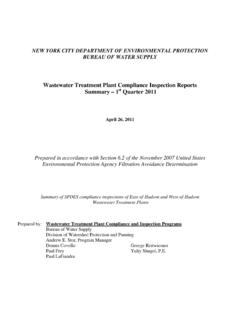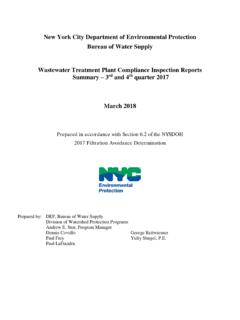Transcription of The State of the Birds 2014
1 The State of the Birds 2014 United states of AmericaThe 2014 State of the Birds assesses the health of our nation s bird populations through a set of habitat indicators, a Watch List of species most vulnerable to extinction, and a list of the Common Birds in Steep indicators are based on the population changes of ob-ligate bird species those Birds restricted to a single habitat where long-term monitoring data is available. This year s indica-tors repeat the method from the original 2009 State of the ForestOceanicShorebirdsIsland*GrasslandC oastalForestWetlandBird Species GroupsPercentage of Species100806040200 Federally threatened or endangeredAdditional Watch List speciesHabitat indicator cHange since 2009 State of tHe Birds reportthe State of the Birds 2014 at a glanceone Hundred years after the extinction of the Passenger Pigeon.
2 The nation s top bird sci-entists from conservation groups and agencies have come together again to publish the fifth State of the Birds s bird HABitAts: continentAl lAnds And inlAnd WAters ..4 Where conservation investments have been made in healthy habitats and cleaner water, Birds are doing well. Due to conservation action, many wetland Birds are showing strong population gains, and grassland bird populations are showing signs of improvement. bird populations in eastern and west-ern forests and aridlands are all in decline, reflecting the urgent need for conservation in these s bird HABitAts: oceAns, coAsts, And islAnds.
3 6 Coastal Birds , shorebirds, and island Birds are squeezed into shrinking strips of habitat impacted by de-velopment and invasive species. Some seabird populations are recovering from prior declines, though threats remain from fishing operations, offshore energy development, and climate change. Some fishing fleets are demonstrating bird -friendly fishing practices that could be a model for other extinctions ..8 There are 230 species on the State of the Birds Watch List of Birds that are presently endangered or at risk of becoming endangered without significant conservation action.
4 Watch List species occur in all habitats, with the highest proportion on Hawai`i. Proactive, partner-driven conservation is the best way to recover currently endangered Birds and keep other species off the Endangered Species ABundAnce ..10 Keeping common Birds common is as important as rescuing rare species. Massive population losses are occurring across several groups of common species, such as aerial insectivores, rural Birds , and Birds that visit from the North. While habitat conservation is most important, there are several additional sources of direct human-caused bird mortalities that could be reduced to benefit bird of tHe PAssenger Pigeon.
5 12As the Passenger Pigeon vanished, America was inspired to create the best conservation and adaptive wildlife management system the world has ever seen. Now that system needs reinvestments to take on the challenges of a new century. Unlike 100 years ago, we are now building on prior conservation successes. Today we know conservation works, and we have the science, technology, and knowledge to prevent APProAcH ..14 The State of the Birds habitat indicators are based on extensive reviews of population trend data from long-term monitoring.
6 The Watch List and Common Birds in Steep Decline are derived from a complete conservation assessment of all bird North American bird Conservation Initiative Committee presents this 2014 State of the Birds Report as a collective call for Birds continue to show the steepest declines, while coastal and wetland bird populations continue to increase.*Includes Birds of Hawai`i, other Pacific islands, Puerto Rico, and Virgin Islands, but not Hawaiian forestsAridlandsEastern ForestsWestern ForestsGrasslandsCoastsWetlands-202010-1 00 Percentage Changeask yourself, what are the Birds telling us about our lands and waters?
7 Aridland Birds are rapidly declining, perhaps an echo of environmental conditions and habitat change in the West. Eastern Meadowlarks are disappearing as family farms fade from rural America. Yet wetland Birds have staged a robust recovery with the help of programs that safeguard wetlands such as the North American Wetlands Conservation Act and the federal Duck Stamp, populations of Mallard, Blue-winged Teal, Gadwall, and some other duck species have risen the Preventing Extinctions section of this report, you ll read about Watch List spe-cies that require our immediate conservation attention, and the factors driving their declines.
8 In Preserving Abundance, you ll read about the Common Birds in Steep Decline those species that still mostly number in the millions but have lost more than half of their global population. Remembering the Passenger Pigeon, we know the importance of keeping common Birds common. Surely we can strive for more than Noah s Ark, more than just a representative sampling of species on Earth. Our grand-children deserve to hear a springtime chorus of meadowlarks calling from the fence-posts, to see wave after wave of sandpipers dancing along the surf, to be amazed by nature not just in its presence, but in its aren t just warning signals; they give us hope.
9 Ducks fly again in great aerial cascades along California s Central Valley and up the Mississippi River and into Chesapeake Bay. California Condors were saved from the brink of extinction, from just 22 Birds to more than 200 today. Bald Eagles, Brown Pelicans, Peregrine Falcons all species once headed the way of the Passenger Pigeon are now common again. Today, we have the science, technology, and knowledge to prevent extinctions. Con-servation works. When we have the will to conserve, we can make a better future: for Birds , for ecosystems, for everyone.
10 The Passenger Pigeon was the most abundant bird America has ever known. As they migrated en masse up and down the eastern United states , they darkened the skylines of New York, Boston, Chicago, Minneapolis, and St. Louis. In 1860, one flock estimated to be a billion- Birds strong was said to be 300 miles long; it took 14 hours, from sunup to sundown, for the flowing river in the sky to years later, the river had dried up to the last few drops, a single bird or a solitary pair that had thus far escaped market hunting and forest clearing. The last known pi-geons in the wild were shot around 1902.





